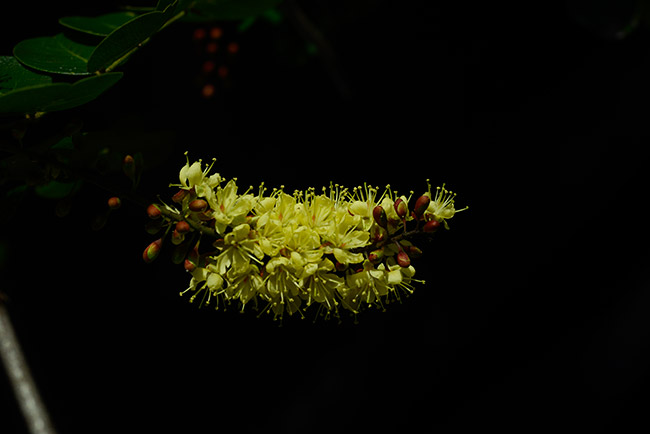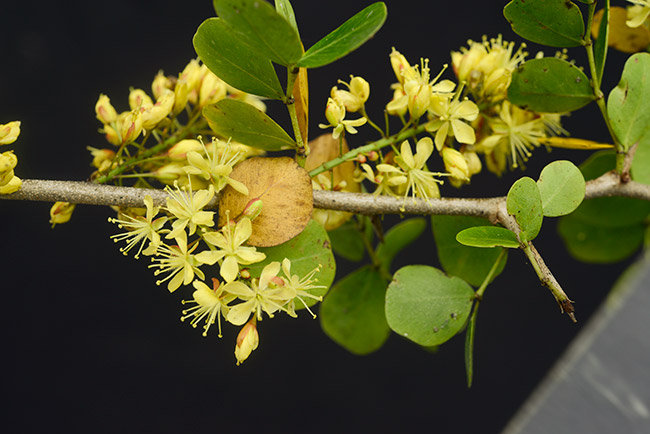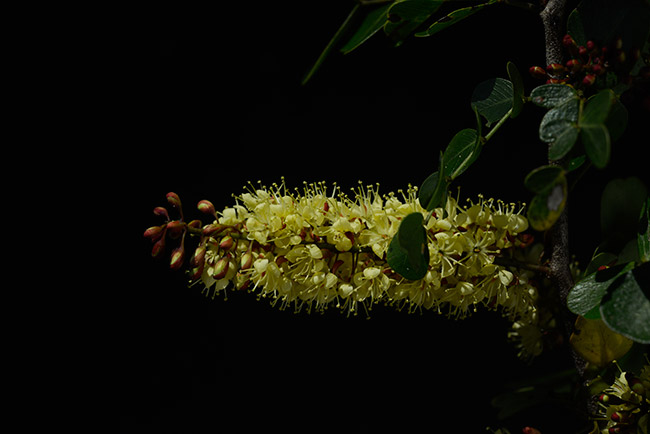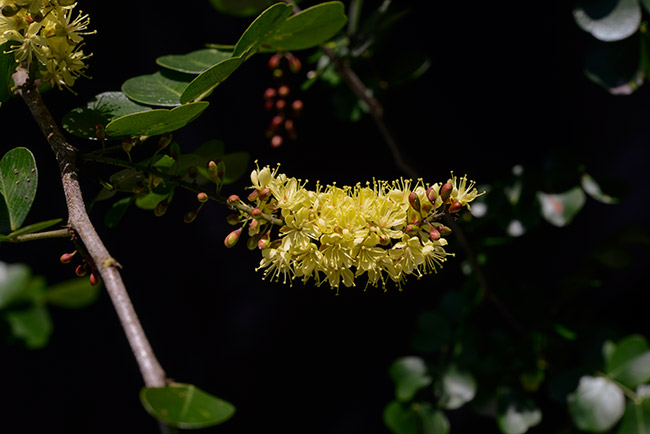Here are samples of our photography of flowers of palo de Campeche in El Peten area of Guatemala. These photographs were taken with a Nikon D800E, Nikkor 60mm macro lens, and natural sunlight, the last week of March 2015.
Flowers of logwood, Haematoxylum campechianum, taken on the last week of March 2015.
Usually we use ring flash and then macro flash. We use sunlight, then with ring flash, and then switch to using macro flash. In this way the graphic designers back in the office can select which results look the best.
But the Nikon had been repaired by Nikon Inc, and it arrived back with all the macro flash triggers totally blocked. It will take us a while to get the Metz and the Nikon macro flash to work.
Flowers of logwood, Haematoxylum campechianum, taken on the last week of March 2015.
When does Palo de Tinto bloom?
On the last days of March 2015 we were pleasantly surprised to find that about 1% of the Palo de Tinto trees along the Arroyo Petexbatun were still blooming. The previous year a higher percentage of Palo de Tinto trees were in full bloom earlier in the year.
For five years we had asked all our acquaintances in El Peten when the logwood trees bloomed. One finquero said this tree never bloomed! Other people also said they had never noticed it blooming.
We have received the same identical story from a dozen people about the conacaste tree (Guanacaste). Yet after five years one of our new plant scouts found one tree with a few flowers on it, in late February or early March. And after many years of asking our contacts throughout El Peten when
But the general consensus is that not all trees of all species bloom every year. The Ceiba pentandra is the best documented case: you can have a row of several ceiba trees, and each one may be in a different phase: with leaves, without leaves, with flowers, without flowers. But I estimate that most palo de tinto trees bloom every year, just that people do not notice the flowers. But a botanist would need to tag the trees over a several year period to be sure whether every mature tinto tree booms or not.
One thing I know is that the period of flowering of Haematoxylum campechianum is short. But for Palo de Brazil, Haematoxylum brasiletto, you can find trees blooming from December through March (or more). But no means is this a single tree blooming for all these months. But as we drive along the highway that is lined on both sides by hundreds of palo de Brazil trees, you can see their yellow flowers month after month. But of course we have no way to mark which tree is blooming in which month, or for how long. That would require a budget and a team to do all this work (which we would gladly undertake if a project funding were available).
Flowers of logwood, Haematoxylum campechianum, taken on the last week of March 2015.
Haematoxylum campechianum is normally not planted
Presently palo de tinto is being exterminated along many of the tributaries of the Rio de la Pasion. The wood is used for house posts but mostly for fences for cattle ranches. So the cattle ranches first cut down and burn down all the forests and then they buy illegally cut logwood from other parts of Guatemala. So cattle ranches destroy not only their own area but also they pay for the destruction of the river eco-systems throughout the Peten.
So far there is no evidence of any significant government attempt to stop the destruction of the river eco-systems. All the cutting is done openly. You can hear the chain saws operating every day. You can see the boats filled with cut logwood every week. You can see piles of illegally cut logwood stacked along the banks in full openness. And obviously all this wood is put into trucks and halted to the cattle ranches. So the illegal transport is also not stopped by any government authority.
I would estimate that these trees are not as fast growers as are zapotón (Pachira aquatica). Actually I always wondered why some rivers have Pachira aquatica but not logwood. And eco-systems with logwood do not seem to have zapotón. I would need to check the shores of Lake Izabal and Rio Dulce to see if there is logwood here mixed with the zapotón that is common.
Flowers of logwood, Haematoxylum campechianum, taken on the last week of March 2015.
First posted April 2015
After being surprised to find Haematoxylum campechianum blooming the last week of March, along the Arroyo Petexbatun, Sayaxche, El Peten, Guatemala.

















































































